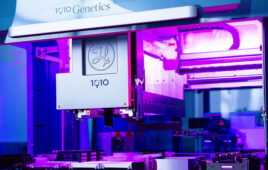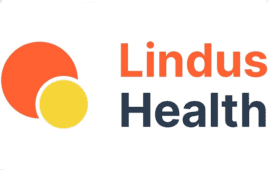
[Image courtesy of Philip/Adobe Stock]
At the heart of the case were Amgen’s patents covering its pioneering monoclonal antibody Repatha (evolocumab), an LDL cholesterol-lowering agent, and two related patents. Amgen’s patents detailed 26 specific antibodies alongside a broader genus patent covering a potential universe of antibodies. Even though Amgen provided a comprehensive 400-page document and a CD-ROM full of x-ray crystallography coordinates for important antibodies, the Court still found that the genus patent didn’t meet the enablement requirement.
The Court deemed Amgen’s extensive detail as amounting to a ‘trial-and-error process of discovery,’ failing to meet the standards of the enablement requirement. This precedent suggests a shift in evaluating future patents, especially those covering an entire class of substances or processes.
“The life science community was anxiously awaiting this decision. We were hoping for more clarity on the topic but this decision leaves open more questions than it answers,” said Katherine Rubino, partner and chair of the life sciences practice group at Caldwell Intellectual Property Law. “This is an area that is still rapidly developing.”
FDA approved both evolocumab and Sanofi’s alirocumab in 2015.
Legal precedents and interpretations
According to a case analysis by Ropes & Gray, the Supreme Court’s decision echoes precedents set over the past 150 years. Specifically, the court concluded that “[i]f a patent claims an entire class of processes, machines, manufactures, or compositions of matter, the patent’s specification must enable a person skilled in the art to make and use the entire class.” Additionally, the justices stressed that the breadth of claims with a patent directly influences the required extent of details, explaining, “The broader the claims made in the patent, the more substantial the enabling details must be.”

Katherine Rubino
The ramifications of the Amgen v. Sanofi decision are profound, according to Gene Quinn, president and CEO of IPWatchdog. He characterizes this decision as driving a “cataclysmic shift in the law of enablement.”
Quinn expressed his concern that the decision contradicts the evidence presented during the case, stating, “The evidence definitively demonstrated that a skilled artisan could manufacture and use everything that Amgen claimed, not just a part of it.” However, the Court sided with Sanofi’s argument that Amgen’s extensive information and details merely constituted a “trial-and-error process of discovery.”
Enablement and genus claims in the Amgen v. Sanofi decision
Under U.S. law, specifically 35 U.S.C. § 112, a patent must give a description of the invention that’s good enough for professionals in the field to be able to recreate it — this is known as ‘enablement.’ On the other hand, a genus claim encompasses multiple embodiments, also known as ‘species.’ In the context of the Amgen case, the enablement test applied by the U.S. Federal Circuit involved determining if the patent would allow those skilled in the art to create all or nearly all embodiments of the claimed invention without excessive time and effort.
Rubino pointed out that the Federal Circuit had been applying a different standard to test enablement. She explained, “The Federal Circuit was using this test called the full scope test. They were considering whether substantial time and effort would be required to reach the full scope of the claims embodiment.”
“This is a meaningful case for the pharmaceutical industry, primarily because the issue of enablement in the life sciences sector has been presented to the Supreme Court in such a critical manner for the first time,” Rubino said.
But this decision comes with a wave of uncertainty and confusion for drug developers. “What adds to the confusion is that the Federal Circuit used a different standard to test enablement than what’s specified under Section 112(a),” Rubino explained.
Parallels: Alice Corp. v. CLS Bank International and the future of patent law
Rubino likens the recent Supreme Court decision to a pivotal case in 2014, Alice Corp. v. CLS Bank International. In the Alice Corp. case, the Supreme Court ruled that merely performing a generic computer process doesn’t suffice to make an abstract idea into a patent-eligible invention. This ruling initially caused a stir in the software industry, mirroring the current reaction in the pharmaceutical world post the Amgen v. Sanofi decision. “Software can certainly be patented; it just needs to be claimed in a way that ties it to a specific computer component,” she concluded
She anticipates a similar adaptation in pharma, with the USPTO continuing to grant ‘genus’ claims. But she underscored the need for fallbacks and additional patents to strengthen one’s position if invalidation becomes a concern down the line.
Rubino’s perspective extends further to include the booming field of artificial intelligence (AI). Her firm files roughly 500 AI patents annually, primarily in collaboration with innovators from academic powerhouses like MIT and Harvard. She emphasizes the patentability of AI, with the stipulation that patents must explicitly detail the AI, machine learning aspects, training data and their interconnections. This requirement for detailed specificity in patent claims echoes the changes evident in emerging technologies and inventive areas, including antibody therapies.
Looking ahead: Navigating post-Amgen v. Sanofi
The verdict in Amgen v. Sanofi has led to a lot of confusion and uncertainty in both patent law and the world of drug development. “We’re potentially opening Pandora’s box because you never have just one patent around your lead compound,” Rubino observed.
Rubino draws attention to the vast amount of information involved when dealing with the complexities of patent protection. She imagines a hypothetical scenario where a drug developer has 20 patents protecting a lead compound with each being hundreds of pages long. “Would that be enough? From today’s standing, No.” But the answer to the question of ‘how much is enough’ still hovers in limbo.
Rubino expresses optimism about eventual clarity, yet she remains uncertain about the timeline. “The magnitude of the impact and where that impact is going to be felt in five years down the road remains to be determined,” she said. “It’ll be interesting to see where the pendulum swings as future courts make decisions based on this precedent. I think we’re going to get more clarity, but it will take more time, more decisions, and more analysis based on this decision here.”
Filed Under: Biologics, Legal precedents and interpretations





Tell Us What You Think!
You must be logged in to post a comment.